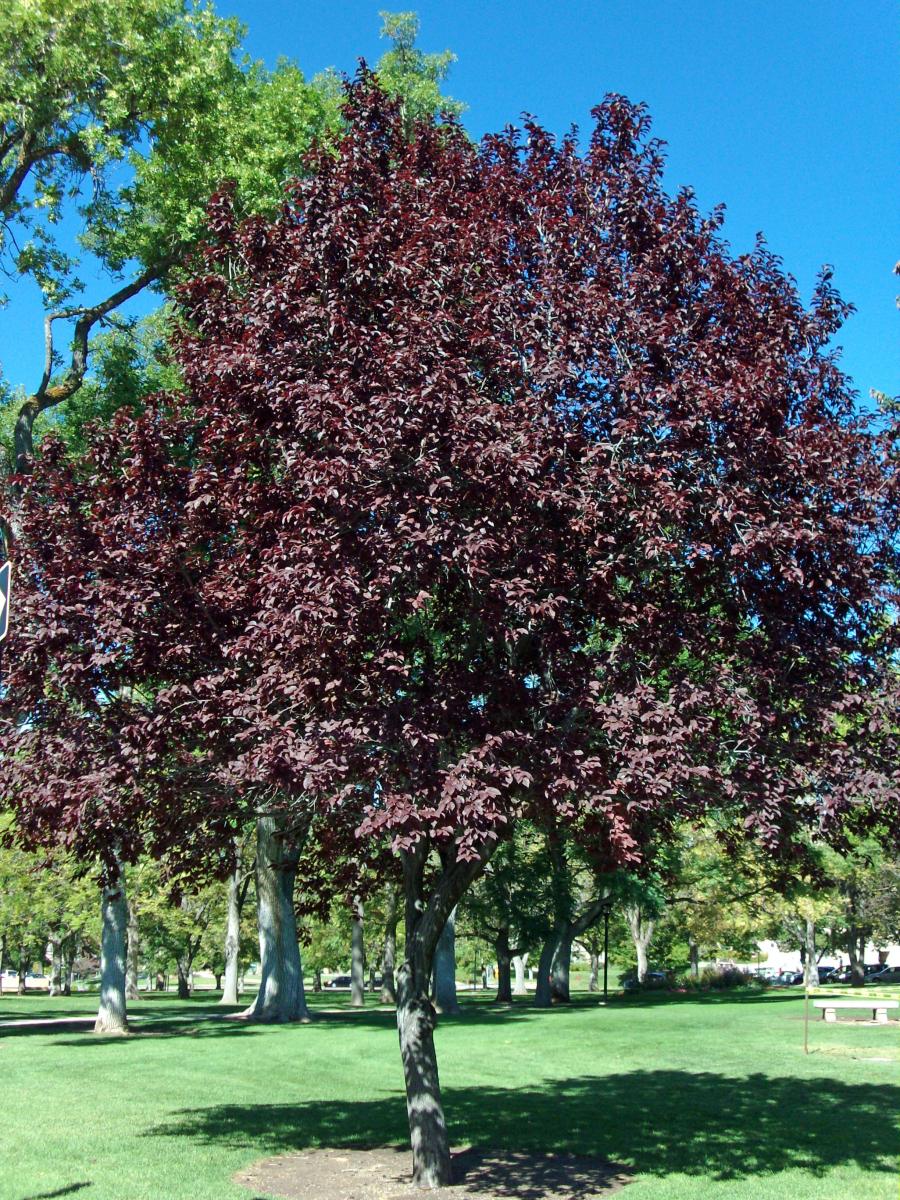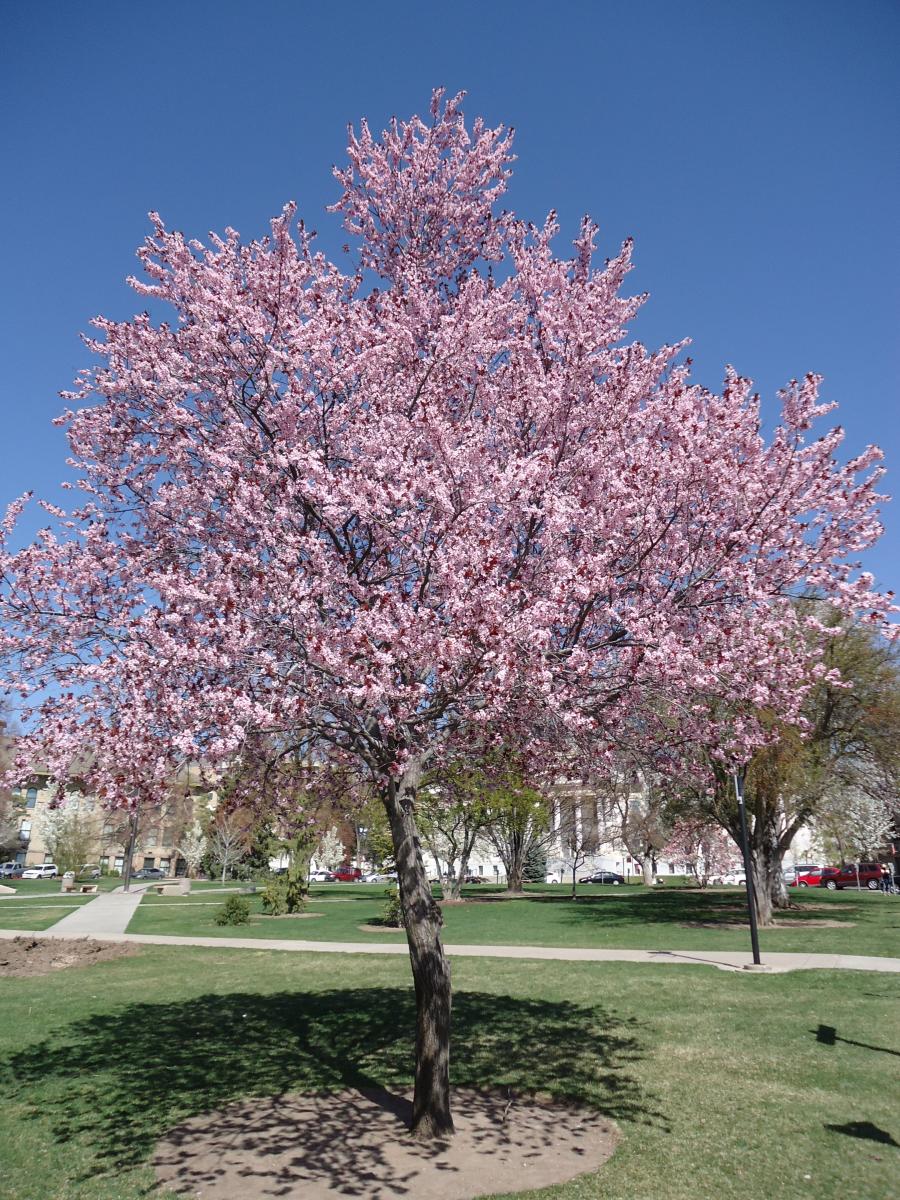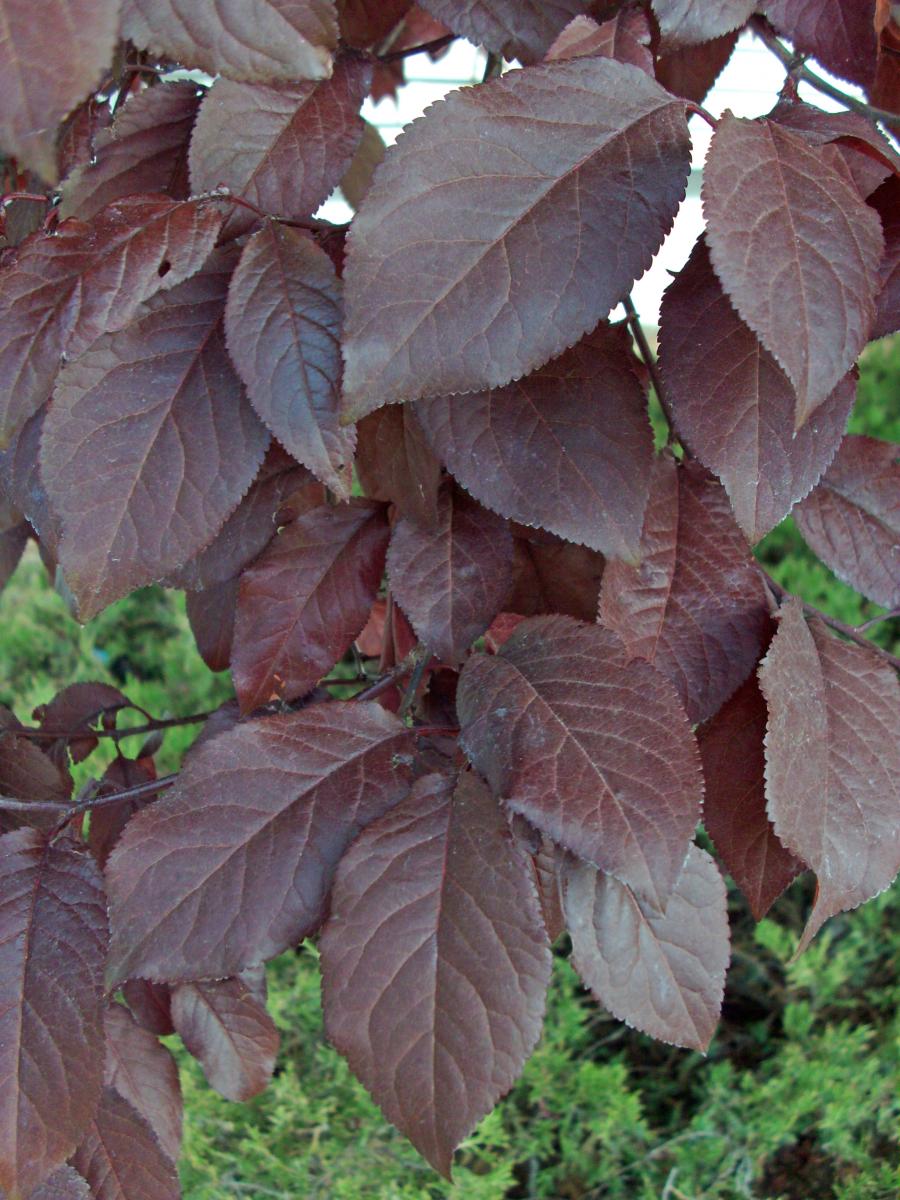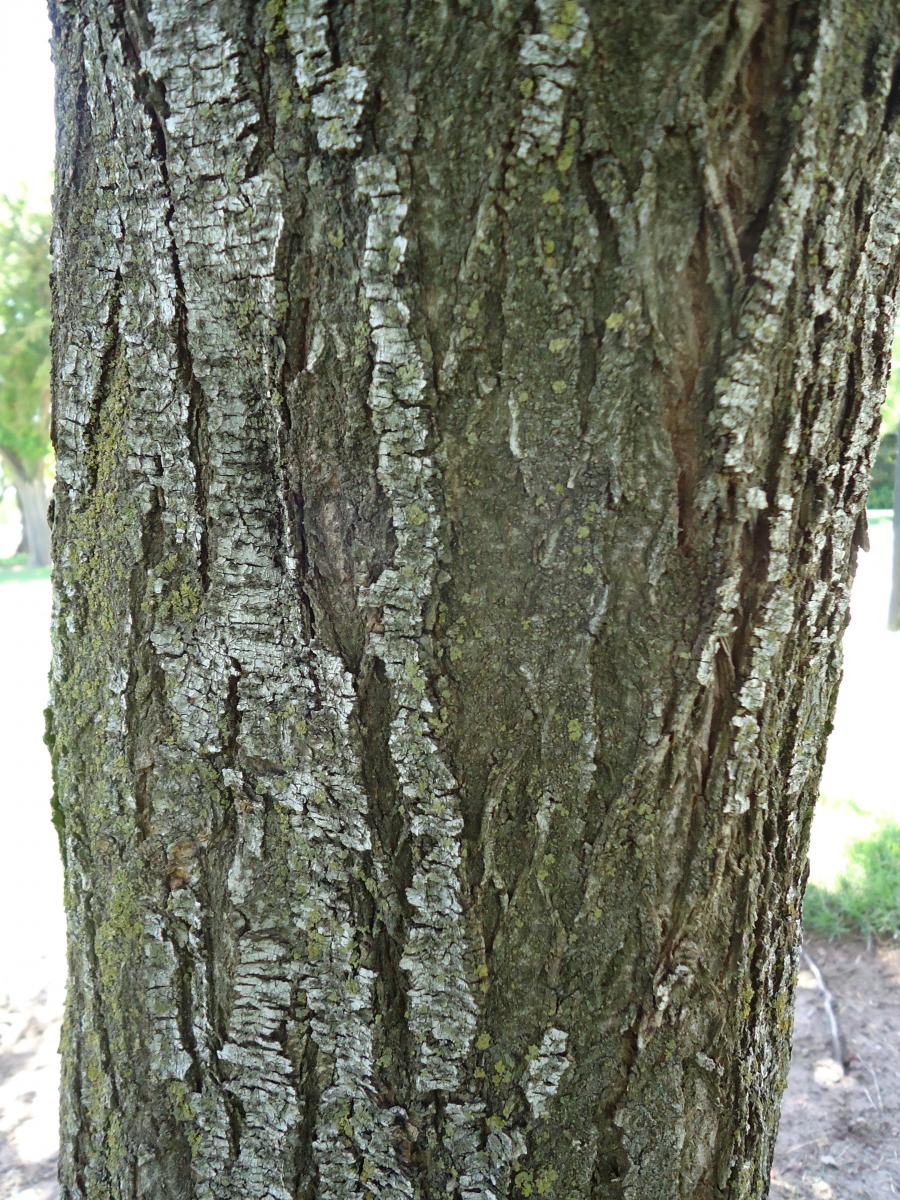Purpleleaf Plum





Prunus cerasifera
Leaves: Deciduous. Leaves are elliptical or oval shape with a blunt pointed tip. 1½ to 2½ inches long and ½ as wide. Leaf edges have fine, blunt serrations. Dark purple or violet-red to purple-green leaf color. Some leaves may brown in hot, dry conditions. No significant fall color.
Bark/Twigs: Bark is characteristically dark in color. Smooth and dark purple to silver gray when young. Roughens with age to very dark gray, almost black.
Flowers/Fruit: Light pink, 1 inch diameter flowers have five petals. One of the first trees to bloom in the early spring (March-April). Flowers usually bloom before leaves emerge, but sometimes the leaves emerge around the same time. Small, 1 inch edible dark purple plums are produced each year and mature mid-summer.
Mature size and shape: Small to medium. 15 to 30 feet high x 15 to 25 feet wide. Rounded with open spreading branches. Fairly dense.
General information/special features: Plant in full sun for richest leaf color. Shade intolerant. Prefers well-drained soil. Performs well in a variety of moist soils. Adaptable to a variety of settings. Not particularly tolerant of pollution and are relatively short lived, about 20 years due to numerous serious insects and diseases.
Landscape use and maintenance: Good ornamental tree. May be planted singly or in groups. Can be planted as a street tree, but fruits can be very messy over sidewalks. Fast growing rate. High maintenance. Transplant in spring. Prune after flowering.
USDA Hardiness Zone: 4 to 9
Family/Origin: Rosaceae – Rose. Native to western Asia and cultivated for centuries.
Campus Use: Somewhat common. Can be found in President's Circle or southwest of the Union (Bld 53).
